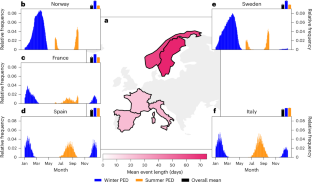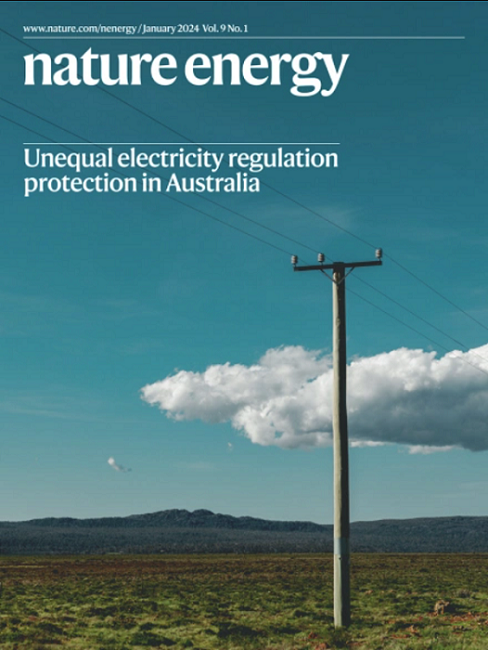欧洲水电系统中的时间复合能源干旱
IF 49.7
1区 材料科学
Q1 ENERGY & FUELS
引用次数: 0
摘要
随着欧洲可再生能源容量的扩大,电力系统面临着更大的能源干旱风险--低产量与高需求并存的时期。我们通过计算 1600 年的日产量和需求量,评估了天气变化导致的电力变化特征。我们以五个欧洲国家为重点,选择了包括水电在内的能源组合,发现能源干旱是由能源和气象系统中造成(时间上的)复合影响的过程导致的。这可能会使原本短期的干旱变成长期的高能源需求得不到满足。例如,春季水库进水量低会使长期能源干旱的几率增加四倍:积雪和降雨量减少会降低水力供应,同时也会使底土干燥,增加热浪的几率,从而将能源问题延长到夏季。我们确定并量化了三种复合能源/气候条件以及多年能源干旱的相关特征和风险,这对未来能源系统的设计至关重要。本文章由计算机程序翻译,如有差异,请以英文原文为准。


Temporally compounding energy droughts in European electricity systems with hydropower
As Europe’s renewable energy capacities expand, electricity systems face increased risks of energy droughts—periods of low production coinciding with high demand. We evaluate characteristics of electricity variability due to weather variations by calculating 1,600 years of daily production and demand. Focusing on five European countries—chosen for their energy mix including hydropower—we find that energy droughts result from processes that cause (temporally) compounding impacts in the energy and meteorological system. These can turn what might have been short-term droughts into prolonged high unmet energy demand. For instance, low reservoir inflows in spring quadruple the chance of prolonged energy droughts: reduced snowpack and rainfall lower hydro availability but also dry out subsoils, increasing the chance of heatwaves and therewith extending the energy problems into summer. We identify and quantify three compounding energy/climate conditions and the associated characteristics and risks of multi-year energy droughts, crucial for informing future energy system design. As Europe’s renewable energy grows, energy droughts become more likely. This analysis of daily production and demand from five EU countries shows that compounded weather impacts, such as low spring reservoir inflows, can quadruple drought risks in summer and winter.
求助全文
通过发布文献求助,成功后即可免费获取论文全文。
去求助
来源期刊

Nature Energy
Energy-Energy Engineering and Power Technology
CiteScore
75.10
自引率
1.10%
发文量
193
期刊介绍:
Nature Energy is a monthly, online-only journal committed to showcasing the most impactful research on energy, covering everything from its generation and distribution to the societal implications of energy technologies and policies.
With a focus on exploring all facets of the ongoing energy discourse, Nature Energy delves into topics such as energy generation, storage, distribution, management, and the societal impacts of energy technologies and policies. Emphasizing studies that push the boundaries of knowledge and contribute to the development of next-generation solutions, the journal serves as a platform for the exchange of ideas among stakeholders at the forefront of the energy sector.
Maintaining the hallmark standards of the Nature brand, Nature Energy boasts a dedicated team of professional editors, a rigorous peer-review process, meticulous copy-editing and production, rapid publication times, and editorial independence.
In addition to original research articles, Nature Energy also publishes a range of content types, including Comments, Perspectives, Reviews, News & Views, Features, and Correspondence, covering a diverse array of disciplines relevant to the field of energy.
 求助内容:
求助内容: 应助结果提醒方式:
应助结果提醒方式:


